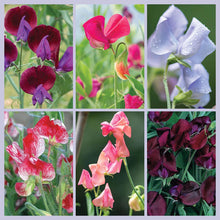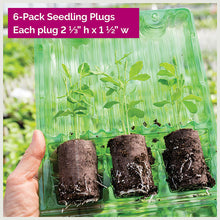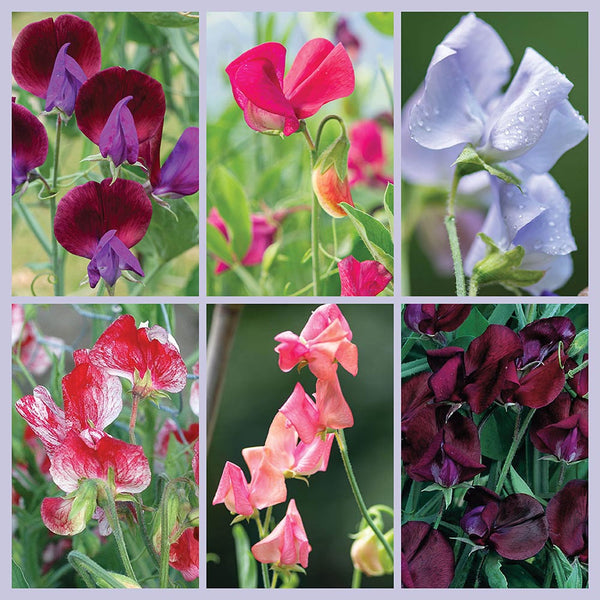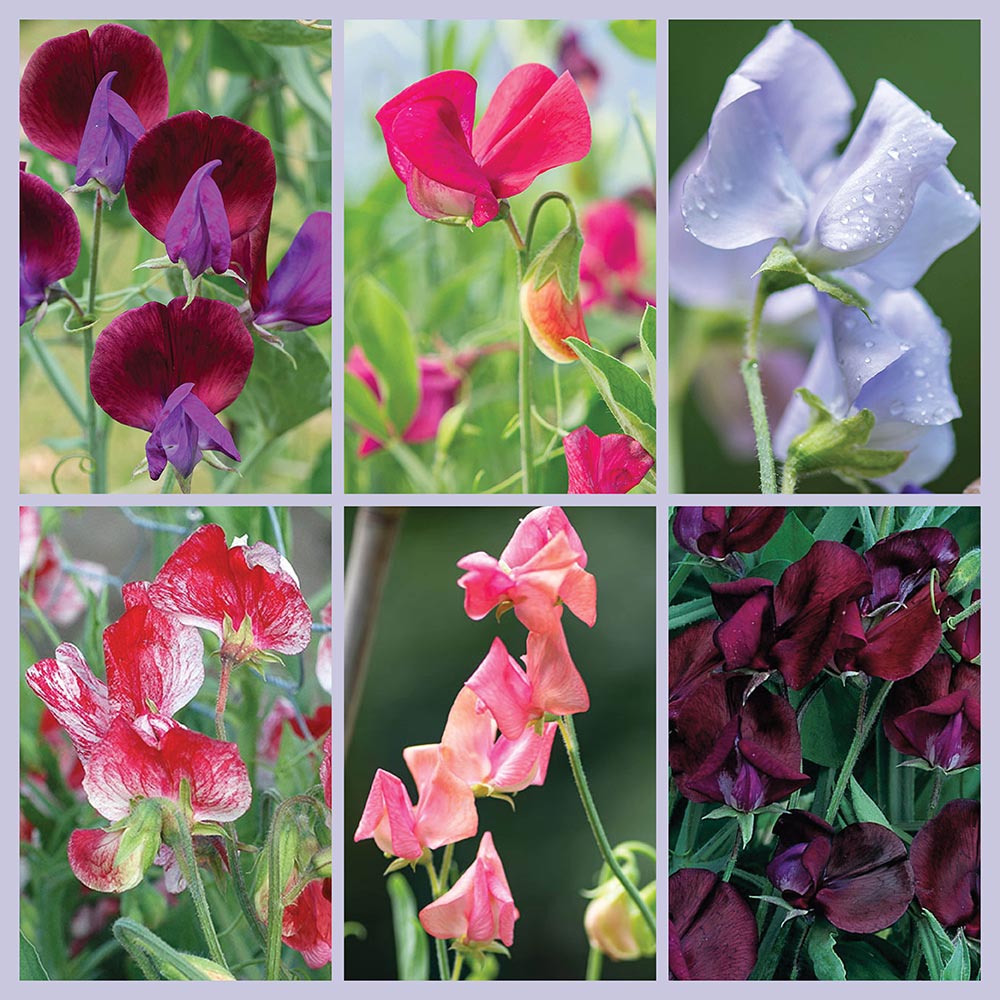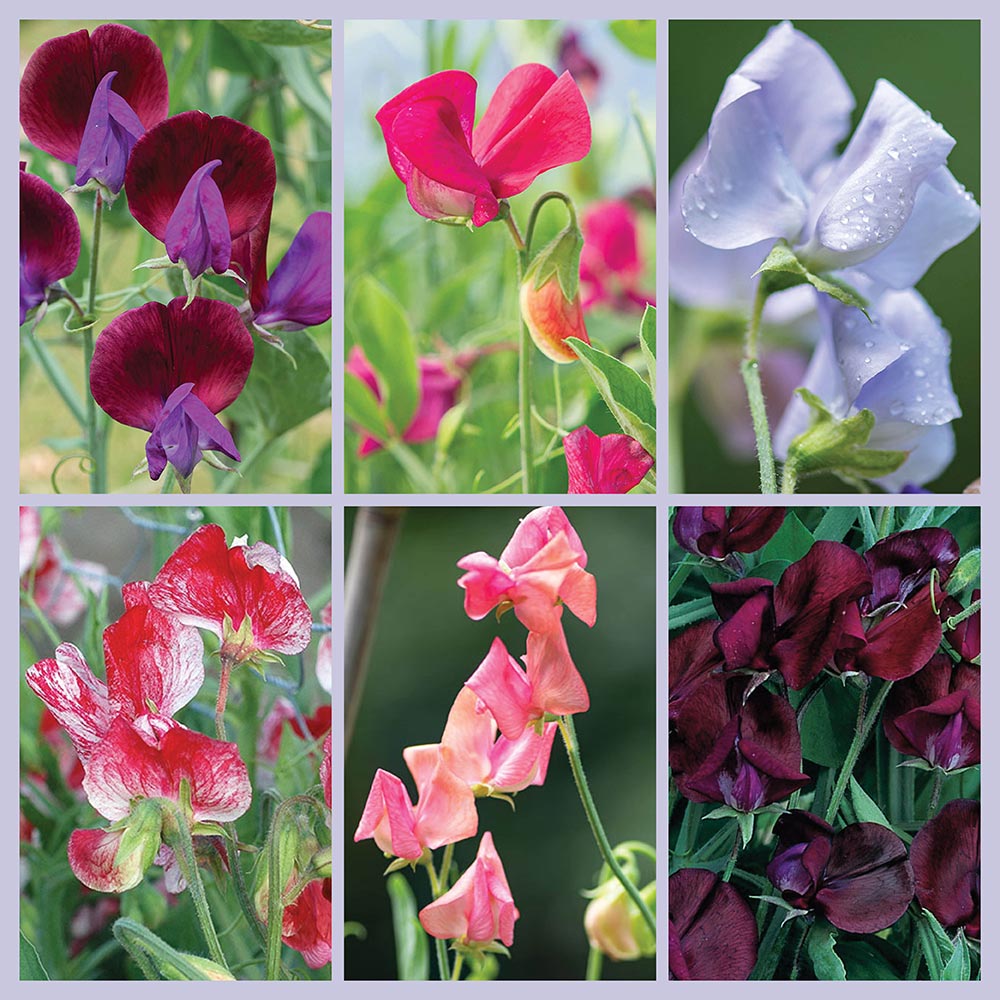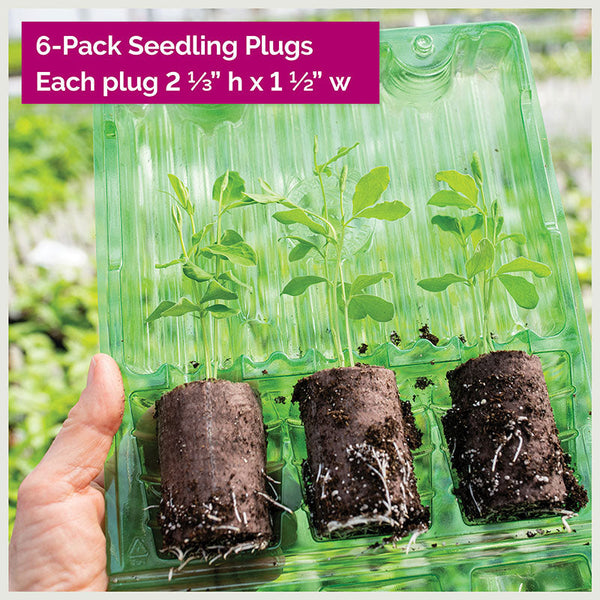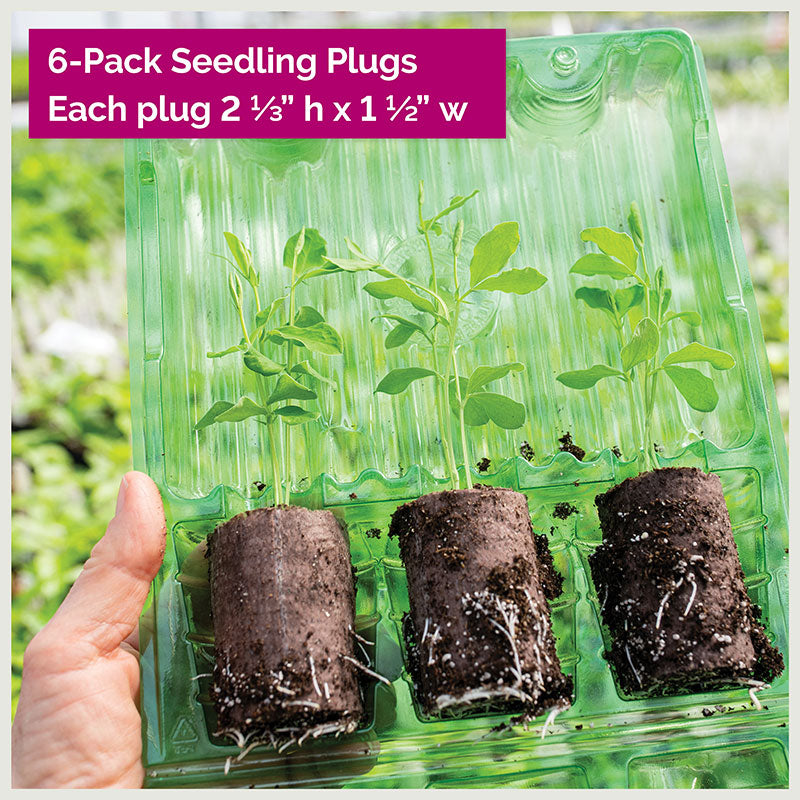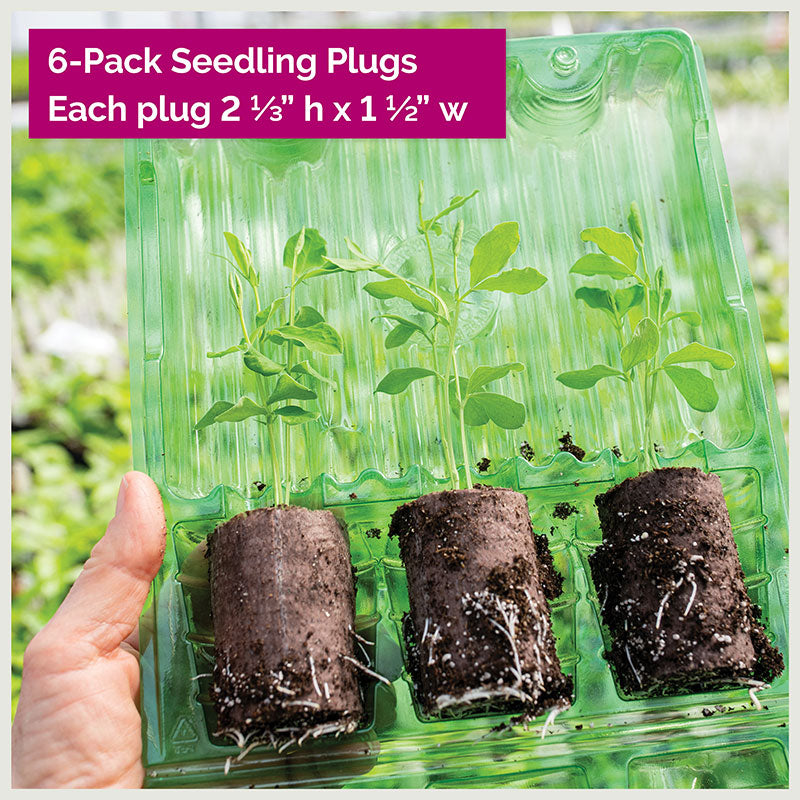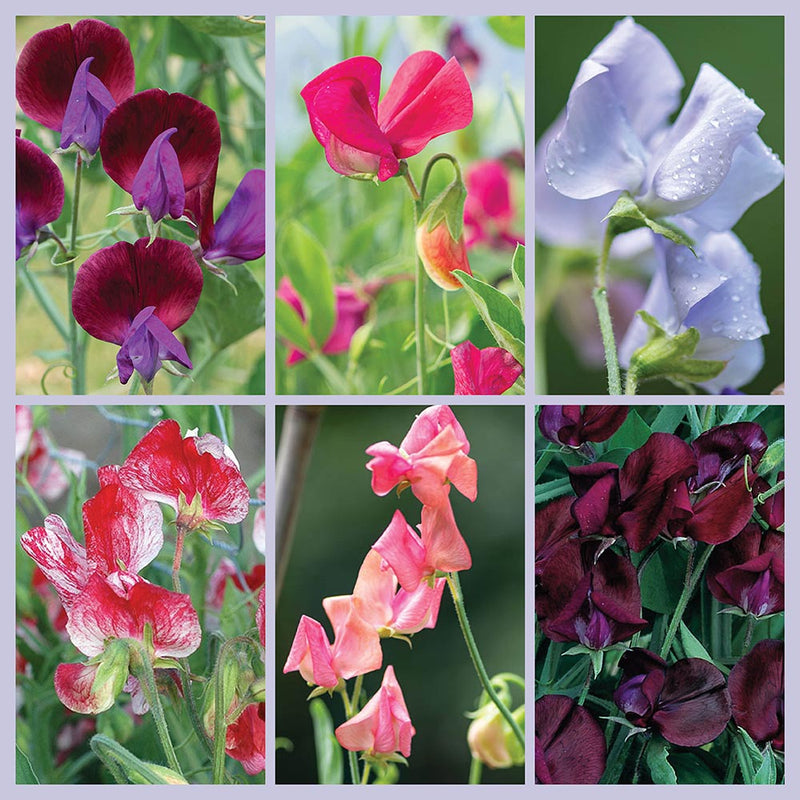Premium Plugs
Sweet Pea 'Heirloom Fragrance' Plant Collection
Lathyrus odoratus
No scent in the world compares with the perfume that rushes from the petals of a pre-Spencer sweet pea. Folks have likened it to the essence of a freshly opened beehive and have never found a synthetic substitute. After years of experimenting with fragrant sweet peas, I offer you the most floriferous, aromatic sweet peas. 6 pack of plugs: 1 plug each of Sweet Pea Cupani's Original, King Edward VII, Lady Grisel Hamilton, America, Miss Willmott, Black Knight. (We reserve the right to substitute, if necessary)
SKU #P4800
Caution: Poisonous. The purchaser assumes all liability related to the use of this product.
Currently Unavailable
Notify Me When Available






























